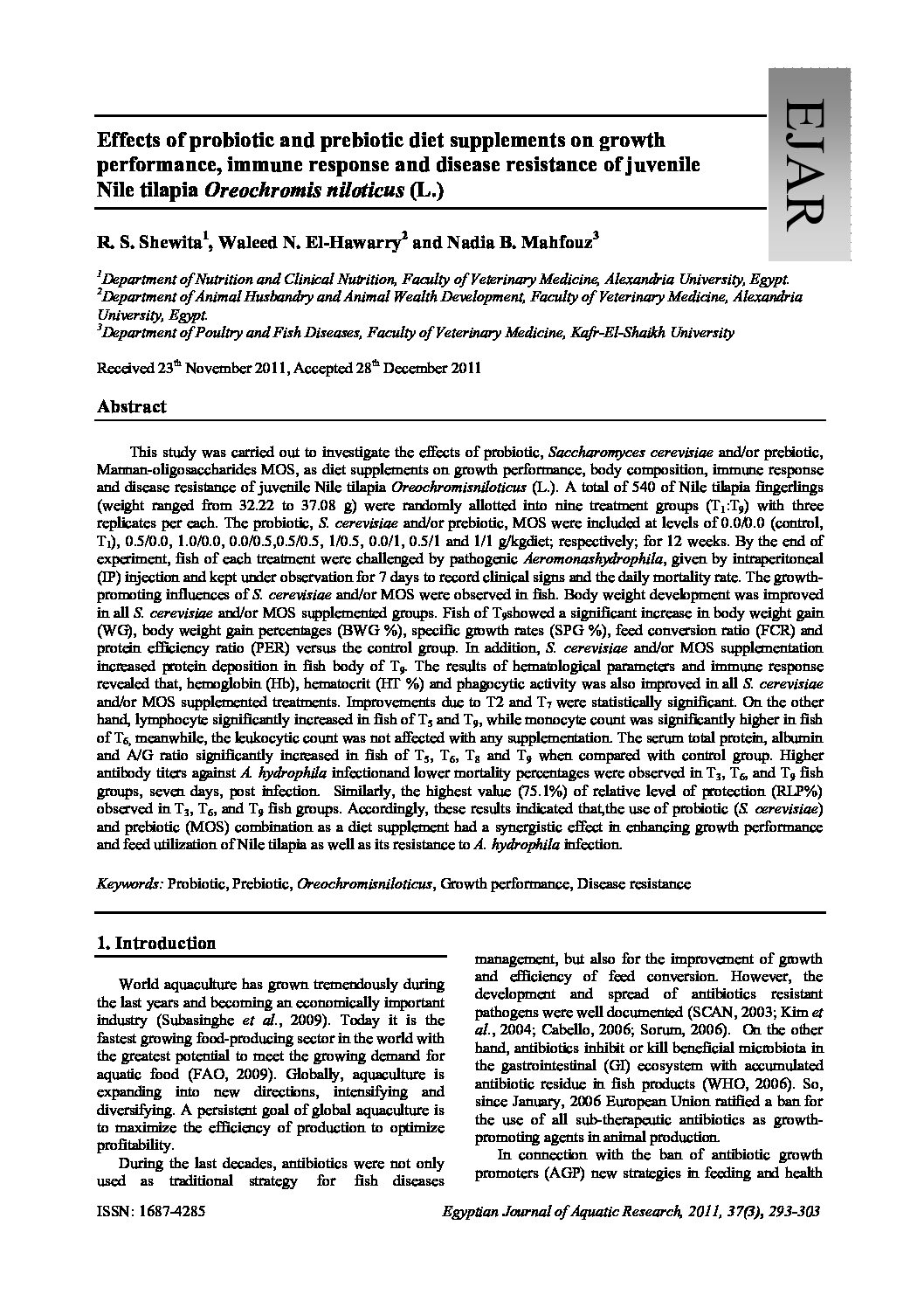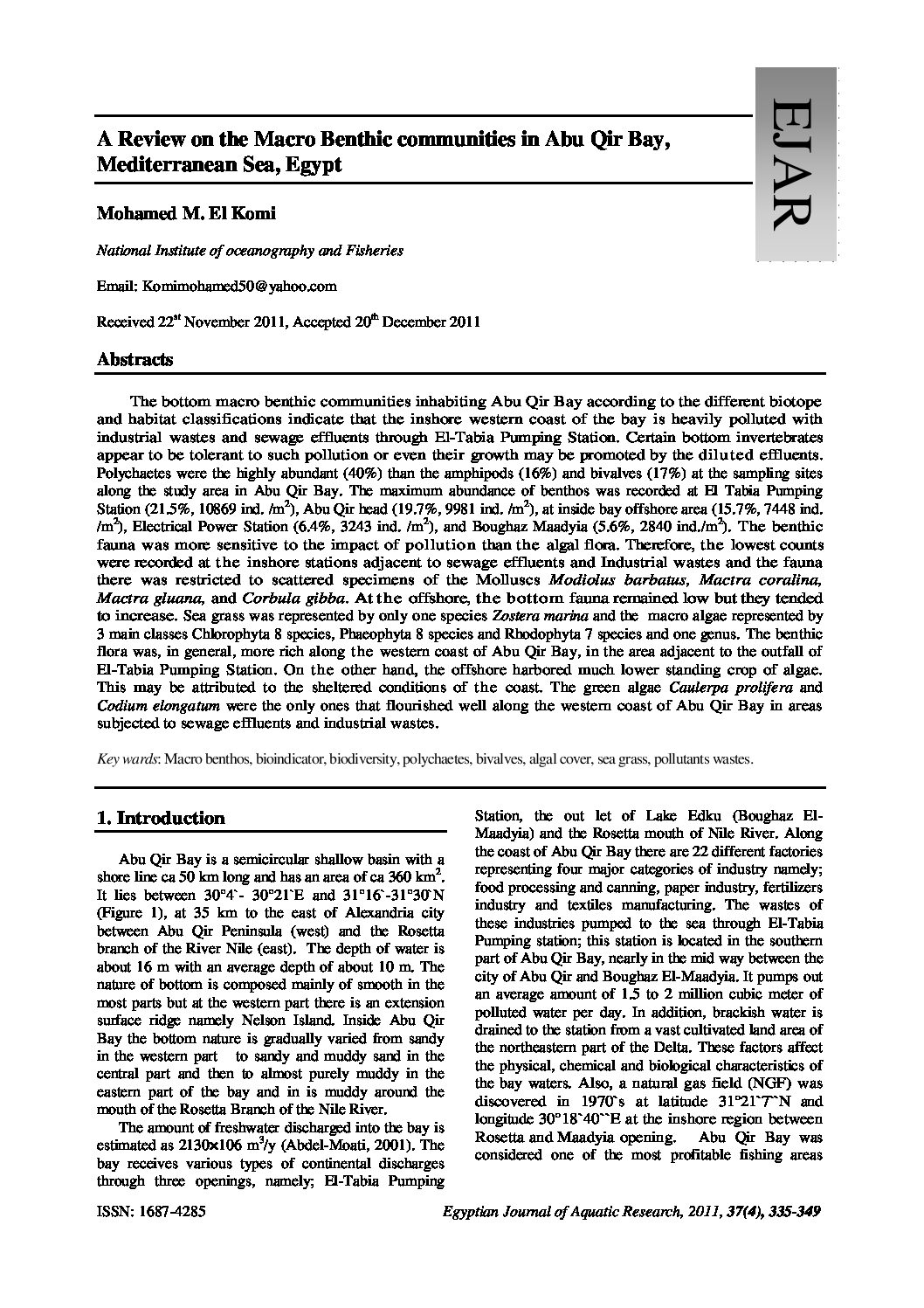Categories
vol-37Effects of probiotic and prebiotic diet supplements on growth
performance, immune response and disease resistance of juvenile
Nile tilapia Oreochromis niloticus (L.)
R. S. Shewita1
, Waleed N. El-Hawarry2
and Nadia B. Mahfouz3
1
Department of Nutrition and Clinical Nutrition, Faculty of Veterinary Medicine, Alexandria University, Egypt. 2
Department of Animal Husbandry and Animal Wealth Development, Faculty of Veterinary Medicine, Alexandria
University, Egypt.
3
Department of Poultry and Fish Diseases, Faculty of Veterinary Medicine, Kafr-El-Shaikh University
Received 23th November 2011, Accepted 28th December 2011
Abstract
This study was carried out to investigate the effects of probiotic, Saccharomyces cerevisiae and/or prebiotic,
Mannan-oligosaccharides MOS, as diet supplements on growth performance, body composition, immune response
and disease resistance of juvenile Nile tilapia Oreochromisniloticus (L.). A total of 540 of Nile tilapia fingerlings
(weight ranged from 32.22 to 37.08 g) were randomly allotted into nine treatment groups (T1:T9) with three
replicates per each. The probiotic, S. cerevisiae and/or prebiotic, MOS were included at levels of 0.0/0.0 (control,
T1), 0.5/0.0, 1.0/0.0, 0.0/0.5,0.5/0.5, 1/0.5, 0.0/1, 0.5/1 and 1/1 g/kgdiet; respectively; for 12 weeks. By the end of
experiment, fish of each treatment were challenged by pathogenic Aeromonashydrophila, given by intraperitoneal
(IP) injection and kept under observation for 7 days to record clinical signs and the daily mortality rate. The growthpromoting influences of S. cerevisiae and/or MOS were observed in fish. Body weight development was improved
in all S. cerevisiae and/or MOS supplemented groups. Fish of T9showed a significant increase in body weight gain
(WG), body weight gain percentages (BWG %), specific growth rates (SPG %), feed conversion ratio (FCR) and
protein efficiency ratio (PER) versus the control group. In addition, S. cerevisiae and/or MOS supplementation
increased protein deposition in fish body of T9. The results of hematological parameters and immune response
revealed that, hemoglobin (Hb), hematocrit (HT %) and phagocytic activity was also improved in all S. cerevisiae
and/or MOS supplemented treatments. Improvements due to T2 and T7 were statistically significant. On the other
hand, lymphocyte significantly increased in fish of T5 and T9, while monocyte count was significantly higher in fish
of T6, meanwhile, the leukocytic count was not affected with any supplementation. The serum total protein, albumin
and A/G ratio significantly increased in fish of T5, T6, T8 and T9 when compared with control group. Higher
antibody titers against A. hydrophila infectionand lower mortality percentages were observed in T3, T6, and T9 fish
groups, seven days, post infection. Similarly, the highest value (75.1%) of relative level of protection (RLP%)
observed in T3, T6, and T9 fish groups. Accordingly, these results indicated that,the use of probiotic (S. cerevisiae)
and prebiotic (MOS) combination as a diet supplement had a synergistic effect in enhancing growth performance
and feed utilization of Nile tilapia as well as its resistance to A. hydrophila infection.
Keywords: Probiotic, Prebiotic, Oreochromisniloticus, Growth performance, Disease resistance







